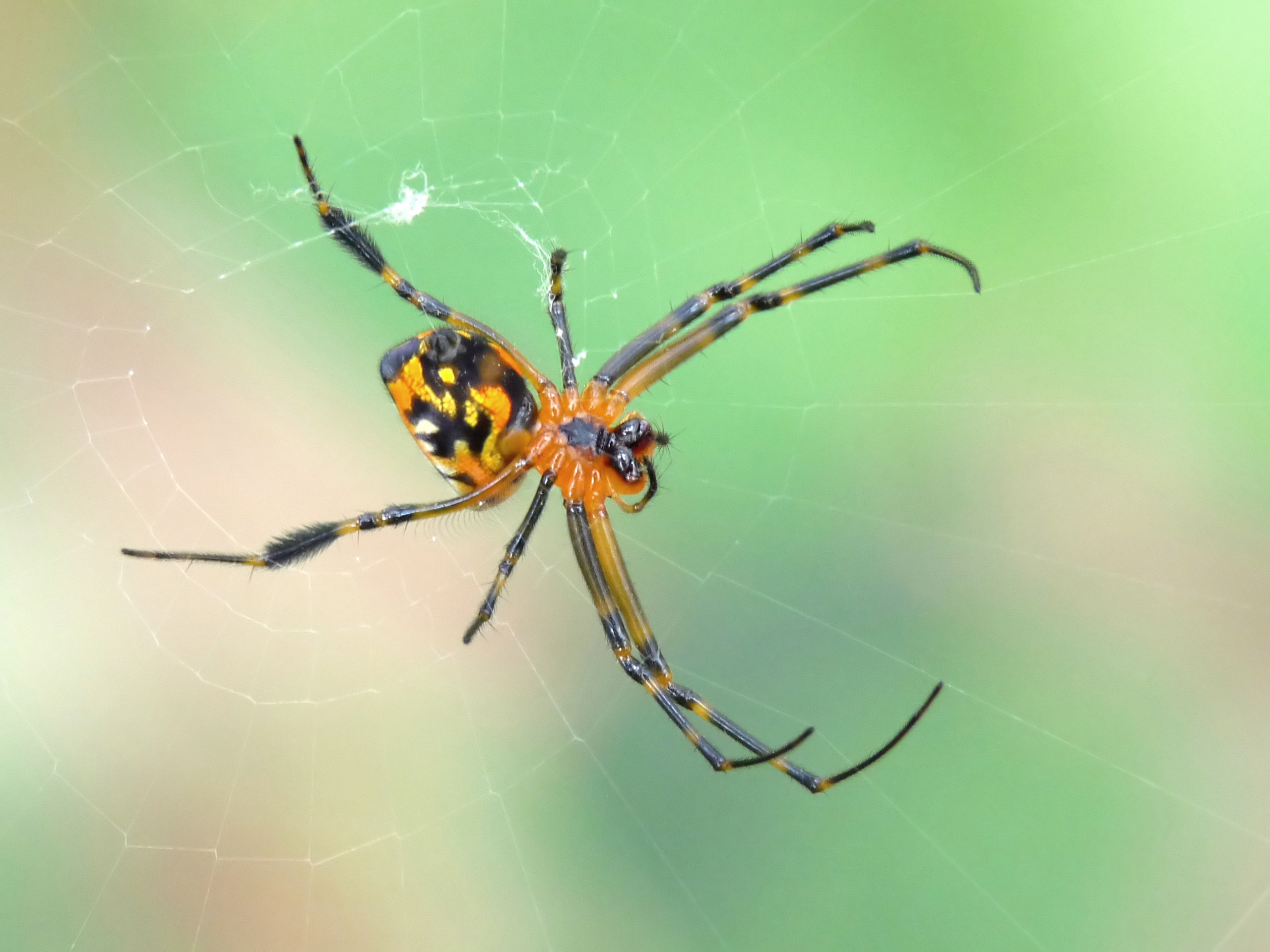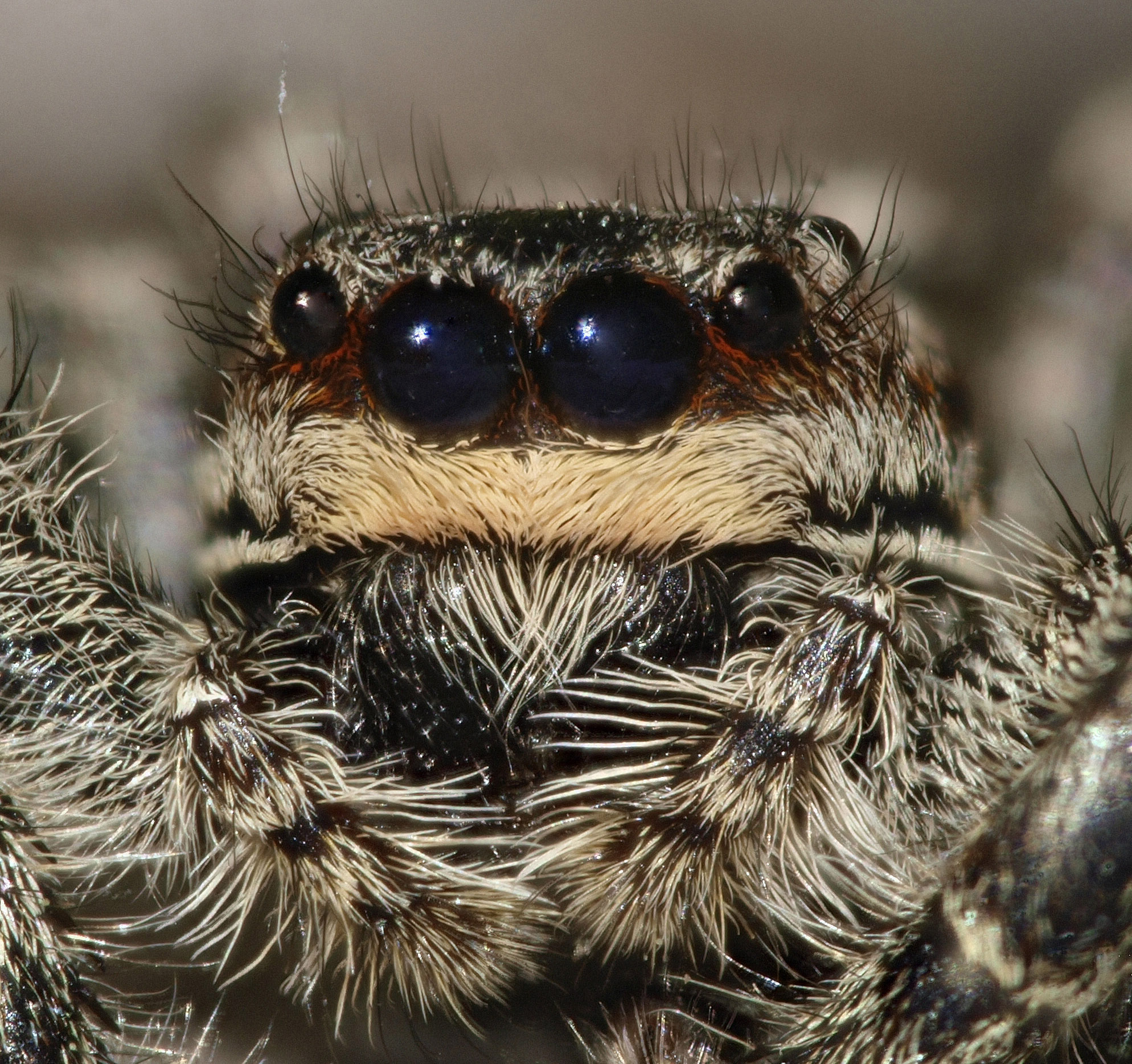|
Aranei Svecici
The book ' or ' (Swedish and Latin, respectively, for "Swedish spiders") is one of the major works of the Swedish arachnologist and entomologist Carl Alexander Clerck and was first published in Stockholm in the year 1757. It was the first comprehensive book on the spiders of Sweden and one of the first regional monographs of a group of animals worldwide. The full title of the work is '' – '', ("Swedish spiders into their main genera separated, and as sixty and a few particular species described and with illuminated figures illustrated") and included 162 pages of text (eight pages were unpaginated) and six colour plates. It was published in Swedish, with a Latin translation printed in a slightly smaller font below the Swedish text. Clerck described in detail 67 species of Swedish spiders, and for the first time in a zoological work consistently applied binomial nomenclature as proposed by Carl Linnaeus. Linnaeus had originally invented this system for botanical names in his 1753 ... [...More Info...] [...Related Items...] OR: [Wikipedia] [Google] [Baidu] |
International Code Of Zoological Nomenclature
The International Code of Zoological Nomenclature (ICZN) is a widely accepted convention in zoology that rules the formal scientific naming of organisms treated as animals. It is also informally known as the ICZN Code, for its publisher, the International Commission on Zoological Nomenclature (which shares the acronym "ICZN"). The rules principally regulate: * How names are correctly established in the frame of binominal nomenclature * Which name must be used in case of name conflicts * How scientific literature must cite names Zoological nomenclature is independent of other systems of nomenclature, for example botanical nomenclature. This implies that animals can have the same generic names as plants (e.g. there is a genus ''Abronia'' in both animals and plants). The rules and recommendations have one fundamental aim: to provide the maximum universality and continuity in the naming of all animals, except where taxonomic judgment dictates otherwise. The code is meant to guid ... [...More Info...] [...Related Items...] OR: [Wikipedia] [Google] [Baidu] |
Larinioides Sclopetarius
''Larinioides sclopetarius'', commonly called bridge-spider or gray cross-spider, is a relatively large orb-weaver spider with Holarctic distribution. These spiders are located in Europe and have been observed as south as the Mediterranean Coast and as north as Finland. They are often found on bridges, especially near light and over water.Roberts, Michael J. (1996) ''Collins Field Guide: Spiders of Britain and Northern Europe'', AND NORTHERN MICHIGAN Collins, , pp. 321–2 The species tends to live on steel objects and is seldom seen on vegetation. Females reach a body length of 10–14mm, and males 8–9mm. Their orb webs can have diameters of up to 70 cm. ''L. sclopetarius'' is attracted to light. Spiders found near light sources may be in better condition and have greater reproductive success than spiders living in unlit areas. Most of these lighted areas are found in cities or other metropolitan areas. As a result, many urban areas have become saturated with these spiders ... [...More Info...] [...Related Items...] OR: [Wikipedia] [Google] [Baidu] |
Larinioides Patagiatus
''Larinioides patagiatus'' is a species of orb weaver in the family Araneidae. It is found in North America, Europe, Turkey, Caucasus, Russia to Central Asia, China, Mongolia Mongolia; Mongolian script: , , ; lit. "Mongol Nation" or "State of Mongolia" () is a landlocked country in East Asia, bordered by Russia to the north and China to the south. It covers an area of , with a population of just 3.3 million, ..., and Japan. Subspecies * ''Larinioides patagiatus islandicola'' (Strand, 1906) * ''Larinioides patagiatus patagiatus'' (Clerck, 1757) References Further reading * * * Araneidae Spiders described in 1757 Taxa named by Carl Alexander Clerck {{araneidae-stub ... [...More Info...] [...Related Items...] OR: [Wikipedia] [Google] [Baidu] |
Nuctenea Umbratica
''Nuctenea umbratica'', the walnut orb-weaver spider, is a species of spider in the family Araneidae. Name The species name ''umbratica'' means "living in the shadows" in Latin. Description The walnut orb-weaver spider is very wide and flattened, with a leathery skin. Its color ranges from red brown and grey brown to black with a dark, yellowish to yellow-greenish leaf-like fleckled marking on its opisthosoma The opisthosoma is the posterior part of the body in some arthropods, behind the prosoma (cephalothorax). It is a distinctive feature of the subphylum Chelicerata (arachnids, horseshoe crabs and others). Although it is similar in most respects to a ..., where small dents are visible. These are the onsets of muscles that flatten the abdomen. Female ''N. umbratica'' can reach up to 15 mm in size, the males grow only up to 8 mm. The spider hides during the day outside of buildings in wall crevices, or under loose bark. They are very common in Central Europe; fema ... [...More Info...] [...Related Items...] OR: [Wikipedia] [Google] [Baidu] |
Araneus Marmoreus
''Araneus marmoreus'', commonly called the marbled orbweaver, is a species of spider belonging to the family Araneidae. It is sometimes also called the pumpkin spider from the resemblance of the female's inflated abdomen to an orange pumpkin. It has a Holarctic distribution. Taxonomy ''Araneus marmoreus'' was first described by Carl Alexander Clerck in 1757. In the same work, he also described ''Araneus pyramidatus'', now regarded as a synonym of ''A. marmoreus''. Description Two main forms of this species are known. The nominate variety has an orange abdomen with black or brown marbling while var. ''pyramidatus'' is much paler, sometimes almost white, with a single dark patch towards the rear of the abdomen. The nominate variety is found throughout the species' range while var. ''pyramidatus'' is more commonly found in Europe, where the two varieties are seldom found together. While the ''pyramidatus'' form is uncommon in North America, this pattern can be seen in the No ... [...More Info...] [...Related Items...] OR: [Wikipedia] [Google] [Baidu] |
Araneus Quadratus
''Araneus quadratus'', the four-spot orb-weaver, is a common orb-weaver spider found in Europe and Central Asia, and as far as the Kamchatka Peninsula and Japan. Females can reach 17 mm in length, especially when gravid, with males around half that. They are quite variable in appearance, ranging from brown to bright orange or green, but they always have the characteristic four white spots on the abdomen. The darker color morphs are easier to identify, due to the contrast between the white spots and the rest of the body. The legs are sometimes brightly striped. The spider lives in gardens, wooded areas, or wherever there is vegetation to string an orb web across. This species builds its web close to the ground to catch jumping insects such as small grasshoppers. The female builds the more elaborate web, complete with a funnel-shaped retreat off to the side where she goes during inclement weather. The web is smaller and closer to the ground than those of other species of orb-w ... [...More Info...] [...Related Items...] OR: [Wikipedia] [Google] [Baidu] |
Araneus Diadematus
The spider species ''Araneus diadematus'' is commonly called the European garden spider, diadem spider, orangie, cross spider, and crowned orb weaver. It is sometimes called the pumpkin spider, although this name is also used for a different species, ''Araneus marmoreus''. It is an orb-weaver spider found in Europe, where it is native, and North America, where it is introduced. Range ''A. diadematus'' has a holarctic distribution throughout Europe and across North America, from southern Canada to Mexico, and from British Columbia to Newfoundland (island), Newfoundland.Cross Spider Washington NatureMapping Project Size and markings [...More Info...] [...Related Items...] OR: [Wikipedia] [Google] [Baidu] |
Tetragnathidae
Long-jawed orb weavers or long jawed spiders (Tetragnathidae) are a family of araneomorph spiders first described by Anton Menge in 1866. They have elongated bodies, legs, and chelicerae, and build small orb webs with an open hub with few, wide-set radii and spirals with no signal line or retreat. Some species are often found in long vegetation near water. Systematics , the World Spider Catalog accepts the following extant genera: *''Alcimosphenus'' Simon, 1895 — Caribbean *'' Allende'' Álvarez-Padilla, 2007 — Chile, Argentina *'' Antillognatha'' Bryant, 1945 — Hispaniola *'' Atelidea'' Simon, 1895 — Sri Lanka *'' Azilia'' Keyserling, 1881 — United States, Panama, South America, Caribbean *''Chrysometa'' Simon, 1894 — South America, Central America, Mexico, Caribbean *''Cyrtognatha'' Keyserling, 1881 — South America, Central America, Caribbean, Mexico *'' Dianleucauge'' Song & Zhu, 1994 — China *'' Diphya'' Nicolet, 1849 — Asia, South America, Africa *''Dolic ... [...More Info...] [...Related Items...] OR: [Wikipedia] [Google] [Baidu] |
Araneidae
Orb-weaver spiders are members of the spider family Araneidae. They are the most common group of builders of spiral wheel-shaped webs often found in gardens, fields, and forests. The English word "orb" can mean "circular", hence the English name of the group. Araneids have eight similar eyes, hairy or spiny legs, and no stridulating organs. The family has a cosmopolitan distribution, including many well-known large or brightly colored garden spiders. With 3,108 species in 186 genera worldwide, the Araneidae comprise the third-largest family of spiders (behind the Salticidae and Linyphiidae). Araneid webs are constructed in a stereotypical fashion, where a framework of nonsticky silk is built up before the spider adds a final spiral of silk covered in sticky droplets. Orb webs are also produced by members of other spider families. The long-jawed orb weavers (Tetragnathidae) were formerly included in the Araneidae; they are closely related, being part of the superfamily Araneo ... [...More Info...] [...Related Items...] OR: [Wikipedia] [Google] [Baidu] |
Marpissa Muscosa
''Marpissa muscosa'' is a species of jumping spider. On average, females have body length ranging from 7.5–14mm, whereas males have a body length ranging from 6–8.1mm. Both sexes are coloured grey to brown. The whole spider has a furry appearance and is flattened in shape. The species builds a kind of nest under the bark of dead trees. Up to 100 of these nests can occur side by side. As other species of ''Marpissa'' spiders, it demonstrates a social hierarchy: weaker animals will acknowledge their inferiority by strutting their front legs and slowly retreating from the scene. Early environmental conditions shape personality types in the developing spiders.Jannis Liedtke, Daniel Redekop, Jutta M. Schneider, Wiebke Schuett: ''Early environmental conditions shape personality types in a jumping spider.'' In: Ann V. Hedrick: ''The Development of Animal Personality'', Frontiers Research Topics, Frontiers Media SA, vol. 3, Dec 2015, article 134, , , . Distribution ''Marpissa musco ... [...More Info...] [...Related Items...] OR: [Wikipedia] [Google] [Baidu] |
Dolomedes Fimbriatus
The raft spider, scientific name ''Dolomedes fimbriatus'', is a large semi-aquatic spider of the family Pisauridae found throughout north-western and central Europe. It is one of only two species of the genus ''Dolomedes'' found in Europe, the other being the slightly larger ''Dolomedes'' ''plantarius'' which is endangered in the UK. Habitat and description Raft spiders are semi-aquatic and adults inhabit freshwater wetlands, specifically wet heaths and acid swamps; although juveniles are predominantly found in terrestrial vegetation surrounding wetland areas. Adults are dark brown with a conspicuous white, cream or yellow stripe along both sides of their abdomen and thorax. Juveniles are similar in appearance but often have green translucent legs. As is common in other spiders, female raft spiders (body length: 9–22mm) are usually larger than males (body length (9-15mm). Dolomedes fimbriatus was described in chapter 5 of the book '' Svenska Spindlar'' by the Swedish arach ... [...More Info...] [...Related Items...] OR: [Wikipedia] [Google] [Baidu] |

_female%2C_Arnhem%2C_the_Netherlands_-_2.jpg)







_-_Kulna.jpg)